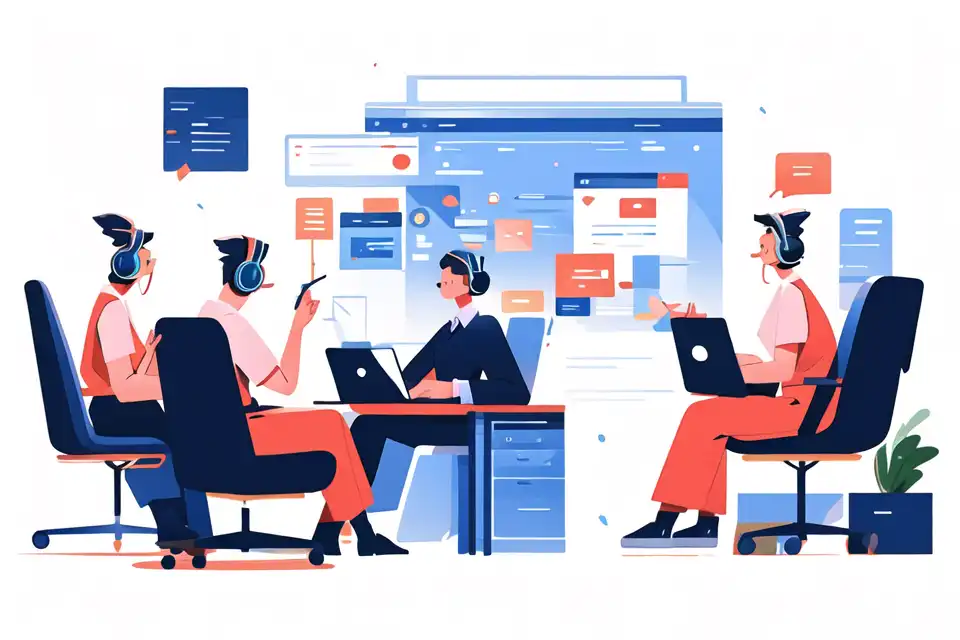Wheel of Life Framework for Research and Development Teams
Unlock the power of wheel of life framework for research and development teams with our comprehensive guide. Explore key goal setting techniques and frameworks to drive success in your functional team with Lark's tailored solutions.
Try Lark for Free
Amidst the constant quest for technological advancement and innovation, it is imperative to acknowledge the significance of holistic approaches in R&D. The utilization of frameworks that promote a well-rounded perspective greatly influences the productivity and sustainability of these teams. In this light, the Wheel of Life Framework emerges as a catalyst for fostering an environment centered on continuous improvement and fulfillment, essential for R&D teams to thrive.
Leverage Lark OKR for enhanced goal setting within your team.
Understanding the wheel of life framework
What is the Wheel of Life Framework?
The Wheel of Life Framework is a renowned tool designed to assess different areas of an individual's life, providing a visual representation of their current status. This powerful visual aid categorizes various dimensions, such as career, health, relationships, and personal development, into a wheel, offering a comprehensive perspective on an individual's overall well-being.
History and Evolution of the Wheel of Life Framework
Originating in the field of life coaching and personal development, the Wheel of Life Framework has a rich history that dates back to ancient philosophical and psychological principles. Over time, it has significantly evolved to cater to the multifaceted needs of individuals across diverse domains, including research and development.
Key Components of the Wheel of Life Framework
The framework typically comprises eight key categories that represent crucial aspects of a well-rounded life. These categories often include career, finance, health, personal development, relationships, social life, physical environment, and recreation. Assessing and addressing these areas can lead to comprehensive personal and professional growth within the R&D context.
Benefits of the wheel of life framework for research and development teams
Improved Work-life Balance and Productivity
Implemented strategically, the Wheel of Life Framework acts as a catalyst for achieving a harmonious work-life balance. By bringing attention to the different facets of one's life, it promotes a healthier integration of personal and professional goals, resulting in increased productivity and satisfaction within R&D teams.
Enhanced Team Cohesion and Communication
The framework encourages open discussions and sharing of individual assessments, fostering transparency and empathy within R&D teams. By gaining insights into each other's challenges and aspirations, team members can forge deeper connections, leading to improved collaboration and collective problem-solving.
Holistic Approach to Personal and Professional Development
The Wheel of Life Framework steers R&D professionals towards holistic growth by emphasizing the interconnectedness of various life domains. This holistic approach inspires individuals to make informed decisions that positively influence both their personal and professional endeavors, leading to comprehensive development in all aspects of their lives.
Steps to implement the wheel of life framework for research and development teams
Step 1: Conducting the Initial Assessment
- Engage the Team: Initiate the process by introducing the Wheel of Life Framework to the R&D team and clarifying its purpose and benefits.
- Individual Assessments: Encourage team members to independently evaluate and assign ratings to different life categories, providing a clear snapshot of their current status.
Step 2: Setting Goals and Action Plans
- Identifying Priorities: Facilitate team sessions focused on identifying priority areas for development based on the assessment results.
- Goal Setting: Collaboratively establish specific and measurable goals aligned with the identified priority areas, fostering a shared sense of purpose and direction.
Step 3: Implementing Strategies for Improvement
- Resource Allocation: Allocate adequate resources and support to enable team members to initiate and sustain actions aimed at improving their identified areas.
- Customized Approaches: Encourage the exploration of individualized methods to address the identified goals, recognizing the diverse needs and aspirations within the team.
Step 4: Monitoring Progress and Making Adjustments
- Regular Reviews: Schedule consistent check-ins and progress reviews to monitor the advancements made by the team members.
- Adaptation: Remain flexible in the approach, allowing team members to recalibrate their strategies as needed, ensuring continuous progress towards their goals.
Step 5: Celebrating Achievements and Planning for the Future
- Recognition: Acknowledge and celebrate the accomplishments of individuals and the team as a whole, fostering motivation and a sense of achievement.
- Future Mapping: Engage the team in a forward-looking exercise aimed at exploring new aspirations and setting the stage for further growth and development.
Learn more about Goal Setting for Teams with Lark
Common pitfalls and how to avoid them in research and development teams
Pitfall 1: Overemphasis on Specific Areas
Challenge: Individuals may tend to overly focus on certain dimensions, neglecting the holistic nature of the framework and limiting their overall growth potential within the R&D environment.
Solution: Encourage team members to appreciate the interconnectedness of various life areas and strive for balanced improvements to attain holistic development.
Pitfall 2: Lack of Alignment with Organizational Goals
Challenge: The framework's initiatives may deviate from the R&D team's overarching objectives, resulting in disjointed efforts and outcomes.
Solution: Ensure that the goals and actions derived from the framework align with the broader vision and mission of the R&D team, fostering synergy and mutual reinforcement.
Pitfall 3: Failure to Cultivate a Culture of Continuous Improvement
Challenge: In the absence of a supportive culture, the framework's impact may diminish over time, leading to stagnation within the R&D team.
Solution: Foster a culture of continuous learning and improvement, embedding the framework's principles into the team's values and practices, thereby sustaining long-term positive impact.
Learn more about Goal Setting for Teams with Lark
Leverage Lark OKR for enhanced goal setting within your team.








